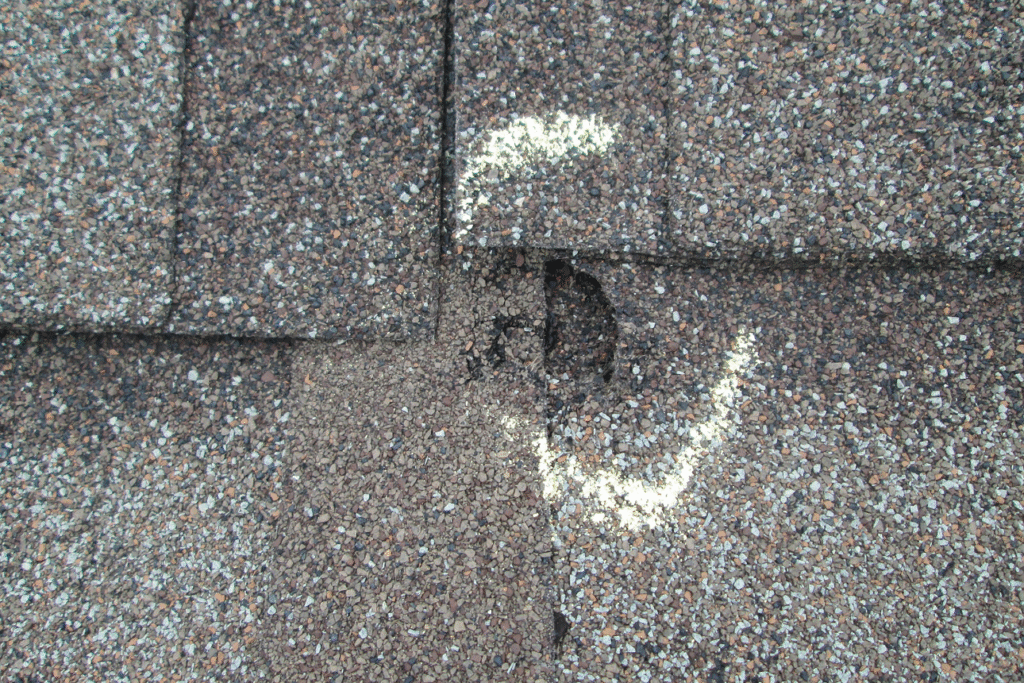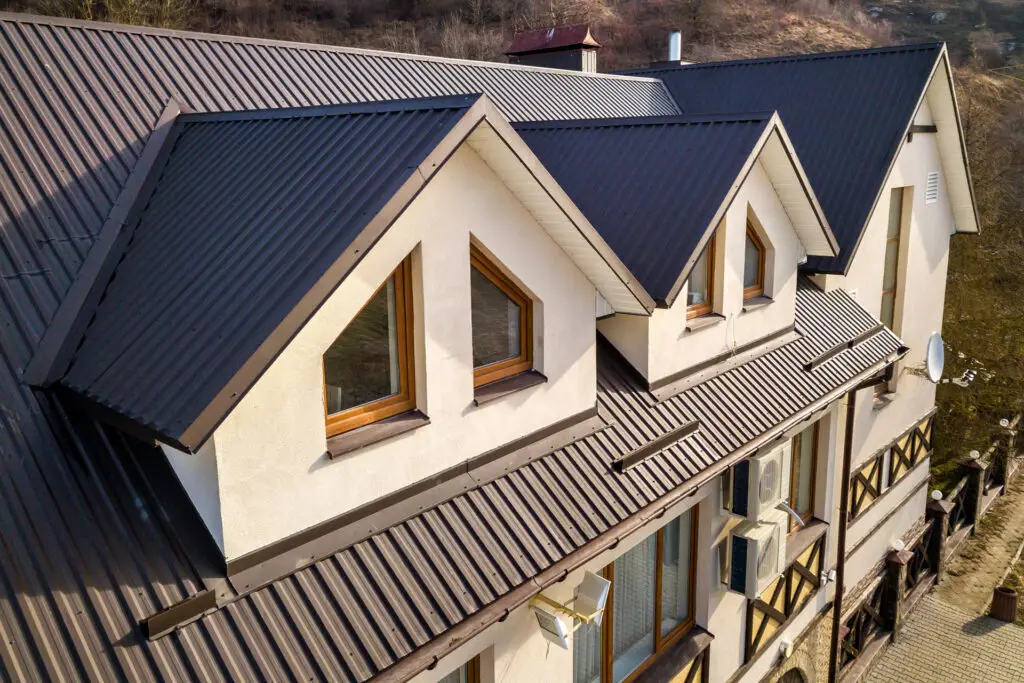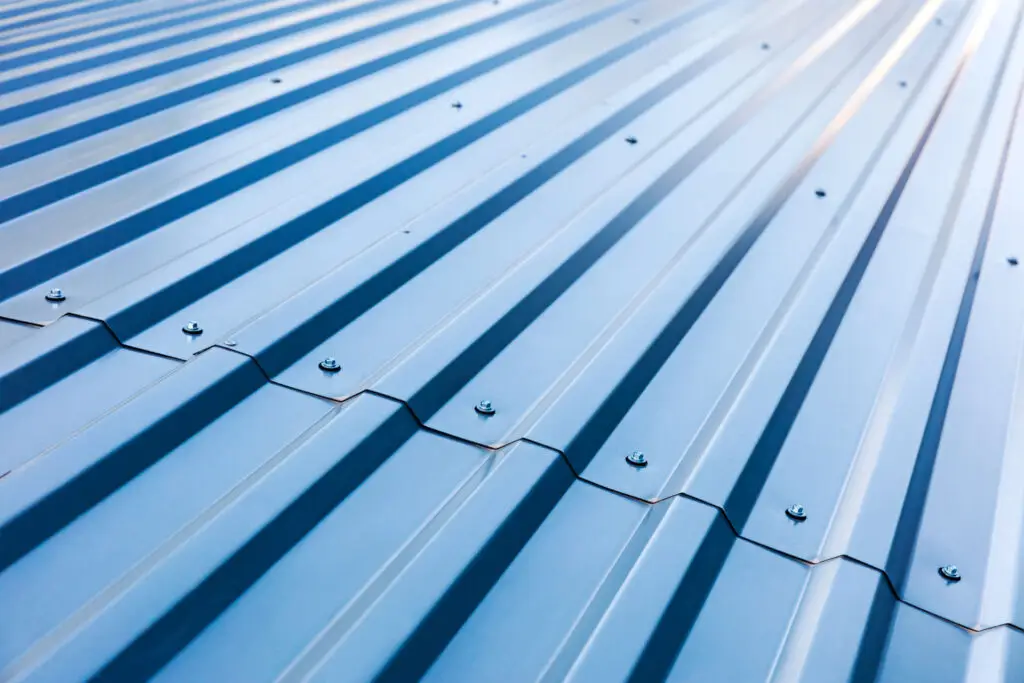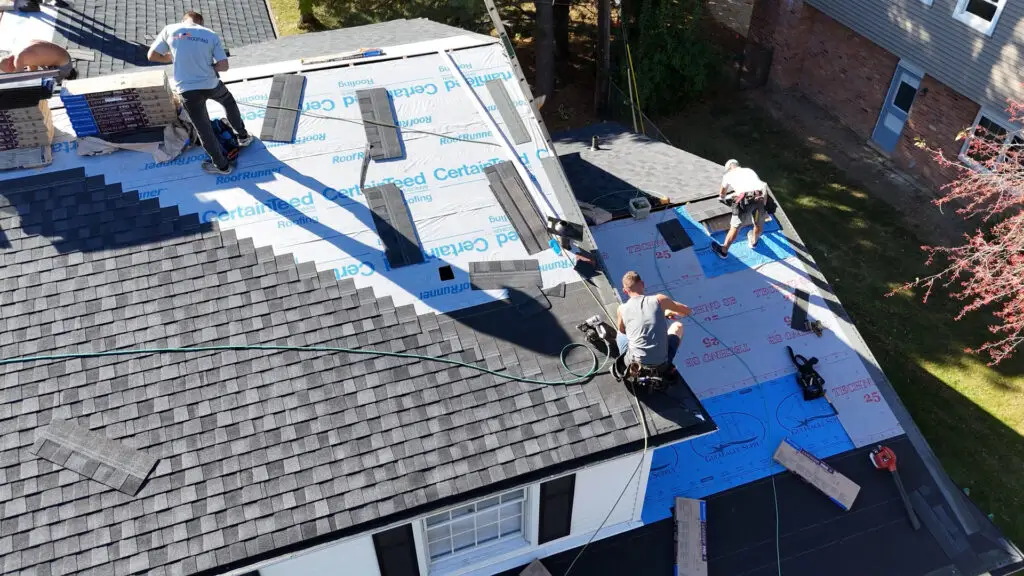Spotting hail damage to roof shingles or flashing isn’t always easy at first glance, which makes repairing storm damage on your roof all the more time sensitive when you do find it.
In this guide, we’ll break down the most common signs of hail damage to your roof, what to do if you suspect damage, how to file an insurance claim, and when it’s time to call in the professionals at BCM Roofing.
What Does Hail Damage to a Roof Look Like?
Hail damage to roof surfaces doesn’t always result in large, visible holes. Instead, hail can cause:
- Bruised or cracked shingles
- Granule loss, exposing the asphalt layer beneath
- Dented flashing or gutters
- Splits in wood shingles
- Soft spots that feel spongy underfoot
If you’re not sure what you’re looking at, you’re not alone. Many homeowners don’t notice the effects of hail until water starts leaking into their attic.
Why Hail Damage Is a Big Deal
Hail may seem harmless—just ice falling from the sky—but the reality is that hail damage to roof surfaces can cause lasting problems. Even small hailstones can knock granules off asphalt shingles, which play a crucial role in protecting your roof from UV rays and moisture. Once those protective granules are gone, shingles break down faster and become more susceptible to leaks and future storms.
Over time, hail damage to roof shingles can lead to hidden issues that may not appear right away. These can include water intrusion, mold growth in your attic, insulation breakdown, and even rot in your roof decking or structural framing. That’s why it’s important not to overlook hailstorms—even if the damage doesn’t seem obvious at first glance.
According to the National Weather Service, hailstones as small as one inch can cause major hail damage to roof systems, especially if combined with high winds or an older roofing surface.
How to Spot Hail Damage After a Storm
Not sure if your home was affected? Here’s how to do a basic visual inspection for hail damage to roof components—no ladder required:
- Gutters and Downspouts: Look for dents or signs of granule loss. Hail impact often dislodges granules, which wash into gutters and clog drains.
- Siding and Decking: Check siding panels and wooden decks for telltale dings or divots. These are often strong indicators that your roof was also hit.
- Shingles: From the ground (or with binoculars), inspect shingles for signs of cracking, bruising, or discoloration. Hail damage to roof shingles can appear as dark spots, raised edges, or pockmarks.
- Metal Fixtures: Look closely at roof vents, flashing, and chimney caps. Soft metals dent easily and are often the first to show visible hail impact.
If you see anything questionable—or if you’re simply unsure—it’s best to schedule a professional inspection. Hail damage to roof structures can go unnoticed until it causes a serious leak or structural problem.
What to Do If You Suspect Hail Damage to Your Roof
- Document the Damage Take photos from the ground or inside your attic if you notice water leaks or sagging.
- Call Your Insurance Provider File a claim as soon as possible. Most policies require prompt reporting after the damage occurs.
- Get a Professional Inspection BCM Roofing offers detailed roof inspections and honest recommendations. We’ll assess the extent of hail damage and help you determine the next steps—whether that’s a simple repair or full roof replacement.

Will Insurance Cover Hail Damage to a Roof?
Most homeowners insurance policies do cover hail damage to roofs, but the amount and process vary depending on your provider and your policy’s terms.
- If your policy includes replacement cost value (RCV), you may be reimbursed for the full cost of a new roof (minus your deductible).
- If your policy uses actual cash value (ACV), you’ll receive the depreciated value based on your roof’s age and condition.
Pro tip: Older roofs (especially 15+ years) may not be eligible for full replacement coverage. Always check your policy and ask your provider directly.
Repair vs. Replacement: What’s the Right Call?
Deciding between a simple repair and a full roof replacement depends on the extent of hail damage to roof shingles. Small dents, minimal granule loss, or isolated cracked shingles may be addressed with a targeted repair. But if your roof shows widespread bruising, compromised flashing, or multiple areas of damage, replacement might be the more cost-effective and lasting solution.
Insurance policies often have specific thresholds for when a roof is eligible for replacement versus repair. That’s why it’s important to have a trusted professional—like BCM Roofing—evaluate the condition of your roof and help you understand your options. We’ll provide a thorough inspection of all hail damage to your roof and give a clear, honest recommendation. And we don’t just stop there—we’ll also assist with the insurance process to make sure you get the coverage you deserve without unnecessary delays or confusion.
BCM Roofing: Your Hail Damage Experts
When it comes to hail damage to roof systems, experience and local knowledge make all the difference. At BCM Roofing, we’ve helped countless Michigan homeowners recover from hailstorms—repairing everything from small cosmetic issues to complete roof failures. We know how to identify hidden damage that less experienced roofers may overlook.
What sets us apart? Our commitment to quality, integrity, and service. We never push for unnecessary replacements, but we also won’t let you settle for a quick fix that won’t last. Our licensed professionals use top-grade materials and follow industry best practices to ensure your home is protected long after the storm passes.
Don’t let hail damage to roof shingles go unchecked. Even if the damage seems minor, it can lead to leaks, insulation problems, and mold if ignored. Schedule your free hail damage inspection with BCM Roofing today and let us help you restore your roof—and your peace of mind.
FAQs About Hail Damage to Roof
How soon should I check for hail damage after a storm?
Immediately after the storm clears. Hail damage may be invisible from the ground but can lead to long-term issues if left unaddressed.
Can hail damage be repaired without replacing the whole roof?
Yes—if the damage is limited, spot repairs may be enough. But widespread impact often requires a full replacement. A trusted contractor like BCM Roofing can help you decide.
Will filing an insurance claim raise my premiums?
Not necessarily. Hail storms are typically considered “acts of nature,” which often don’t affect your premiums in the same way as other types of claims.
What’s the cost to repair hail damage to a roof?
Costs vary based on damage severity, roof size, and materials. That’s why an inspection is essential to get an accurate quote.
Is hail damage always obvious?
No—many signs are subtle and go unnoticed until water damage appears. This is why a professional inspection is so important after a hailstorm.


